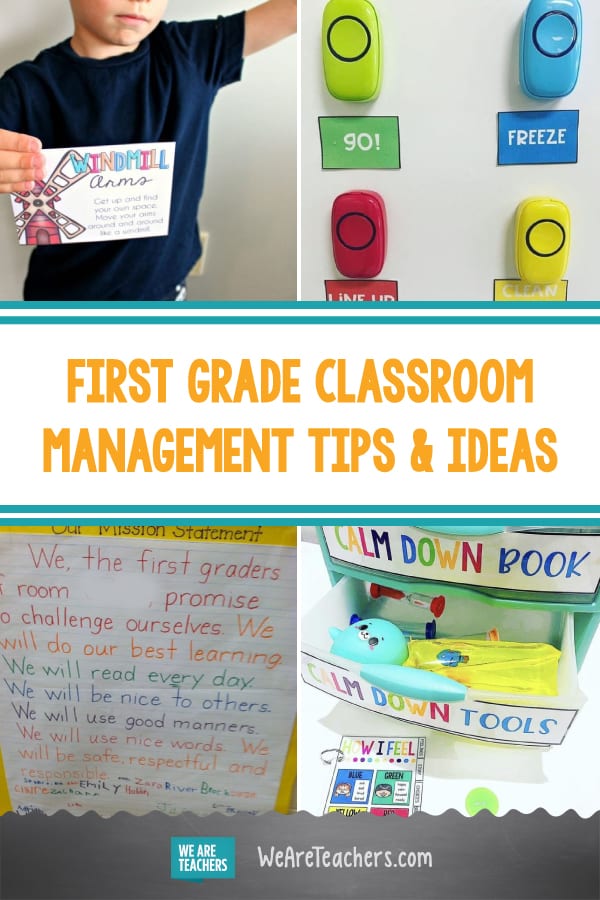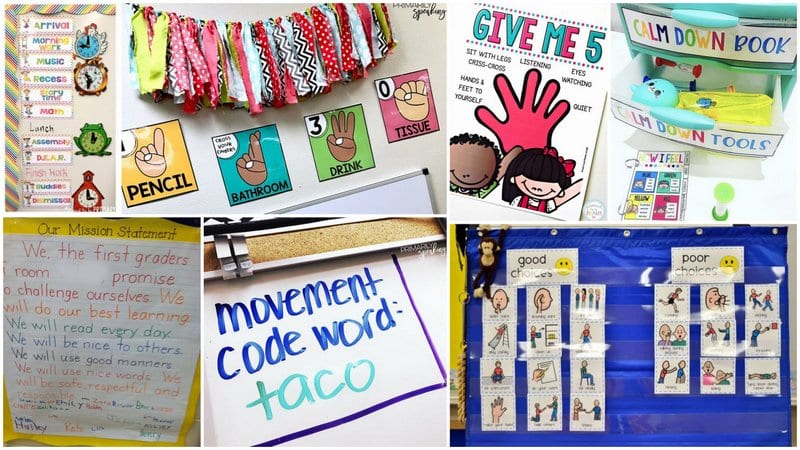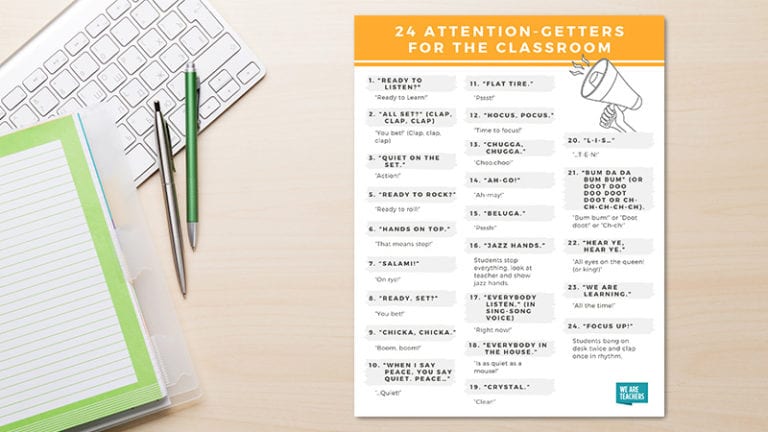With a year of kindergarten under their belts, first graders should be pretty familiar with what school is all about. These first grade classroom management strategies help reinforce what they already know, and create a learning environment where every student can succeed!
1. Agree to the classroom rules.
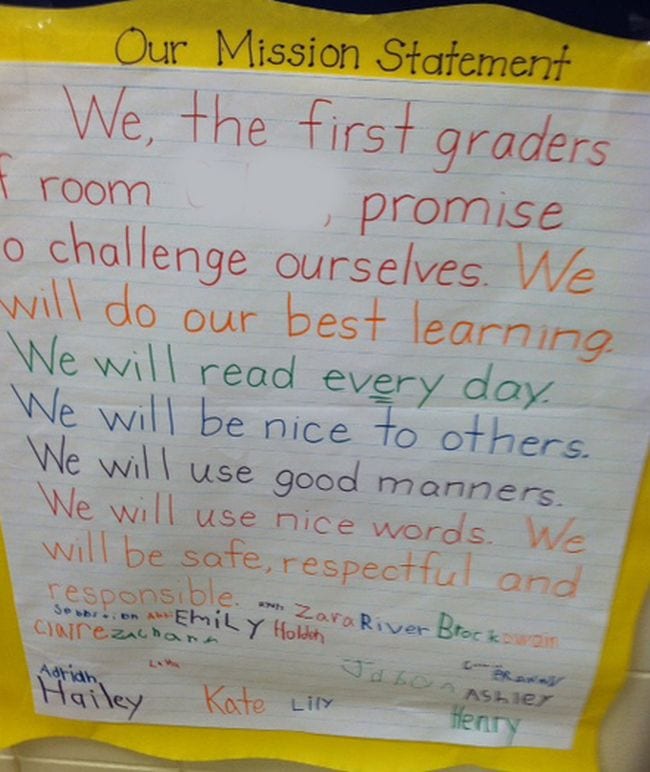
First grade classroom management starts with a set of clear rules for kids to follow. Give your students a sense of ownership by asking them to agree to the classroom rules. Discuss the purpose of each rule, then have them sign the poster. If they break the rules, you can use this visual to remind them of the promise they made the very first day of class.
Learn more: Anna Schmitdt, Student Data Resource Folder
2. Review good and bad choices.
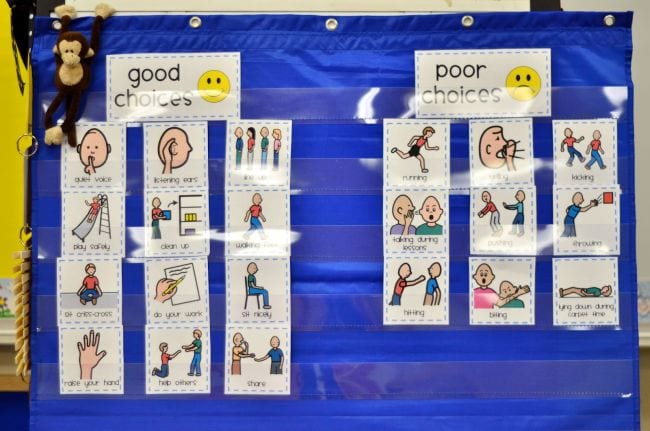
This simple sorting activity helps reinforce what your students learned in kindergarten when it comes to making good and bad choices. Talk about how each of the choices fits in with your classroom rules; for instance, if one of your rules is “Be nice to each other,” they should recognize that “interrupting” is a bad choice for that rule, while “raise your hand” is a good one.
Learn more: Mrs. Ricca’s Kindergarten
[contextly_auto_sidebar]
3. Assign classroom jobs or pick helpers.
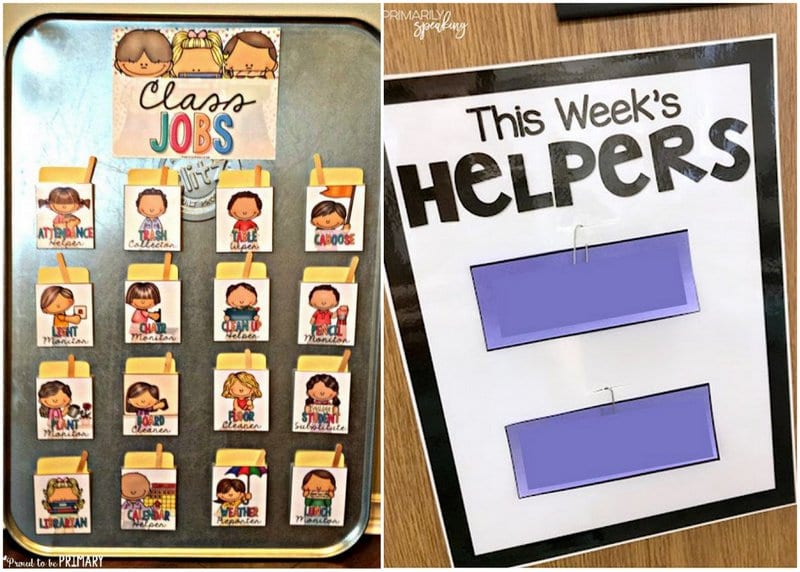
Firsties are definitely old enough to start taking responsibility for some of the tasks around the classroom. You can do this by assigning and rotating jobs (passing out papers, running errands, distributing supplies, etc.). Or, simplify your life and just pick a couple of new helpers each week. These students can take care of whatever needs to be done.
4. Save your voice with a doorbell.
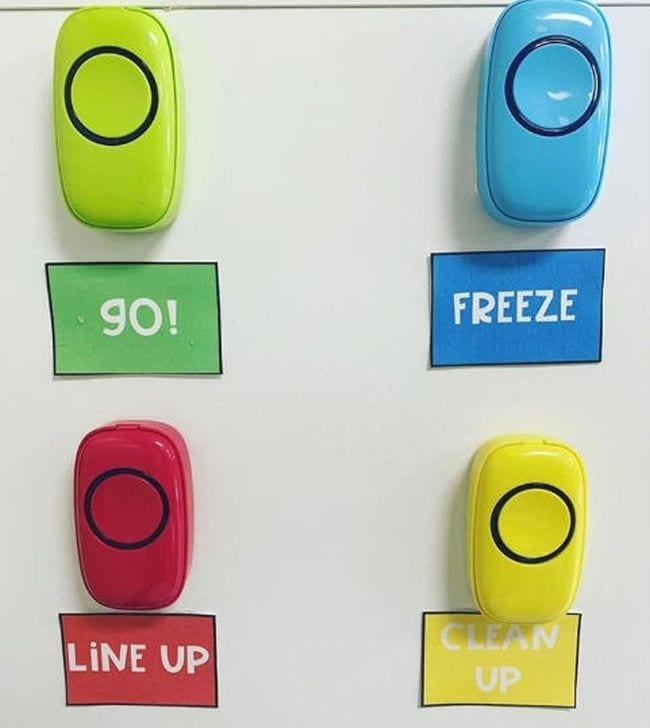
Wireless doorbells have become a huge teacher favorite, and they’re a must-have for first grade classroom management. Use them for transitions, attention-getters, cues during group work, and so much more. Find out how teachers are using wireless doorbells here.
5. Post your daily schedule.
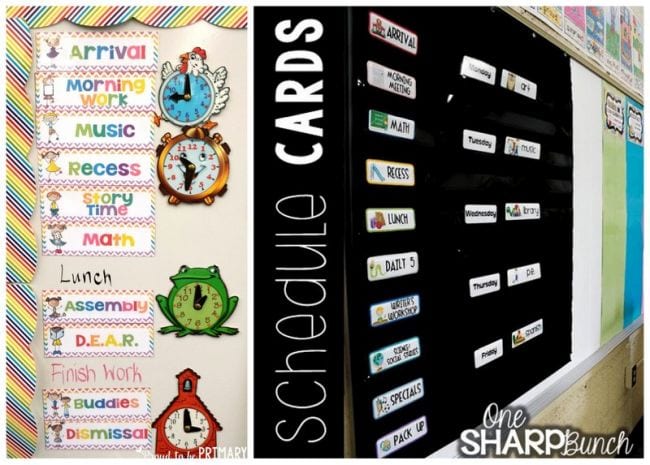
Save yourself the hassle of “What are we doing next?” or “When is recess?” by posting your schedule each day. A set of interchangeable cards on magnets or Velcro dots makes it easy to move things around. Add clocks too, since firsties are usually still working on telling time. If your schedule is mostly the same every day, simply post notes to the side indicating changes like special events.
6. Teach them to Give Me 5.
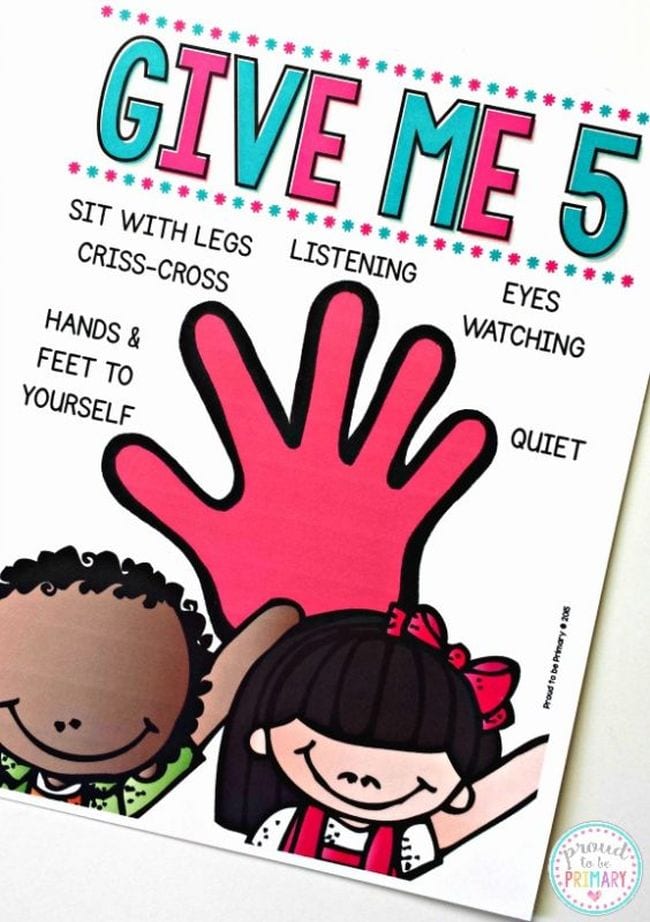
When they’re not at their desks, kids tend to have a harder time getting ready to pay attention. Teach them the five things they need to do with this cute free printable. Then, anytime you say “Give Me 5!” kids should automatically do all five steps and raise their hand high in the air. It’s a quick and clever way to re-focus their attention.
Learn more: Proud to Be Primary
7. Use call-and-response attention-getters.
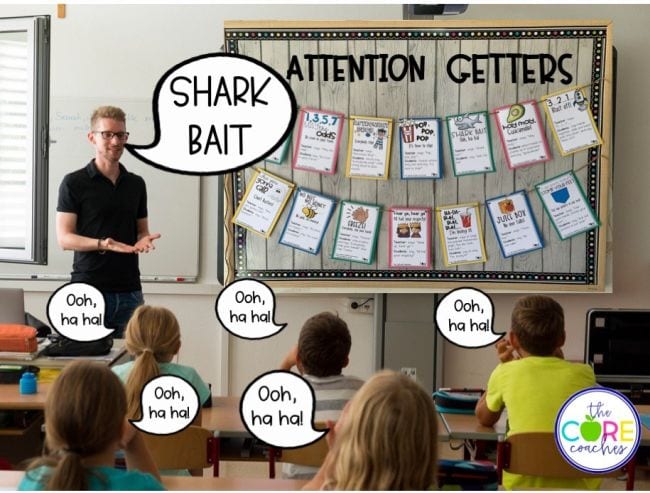
Where would teachers be without attention-getter phrases? These are a quick and clever method for getting kids to focus on you. Perennial favorites include: “Hocus Pocus: Time to Focus!” and “Chicka Chicka: Boom Boom!” Find a free printable poster of 25 terrific attention-getters here.
8. Introduce hand signals.
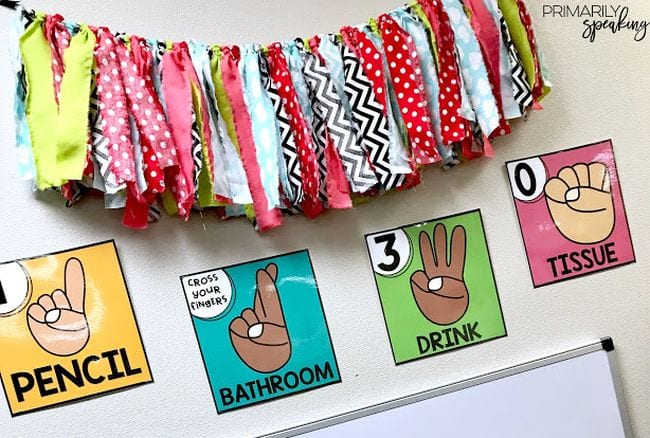
Consider using hand signals as part of your first grade classroom management strategy. These are especially useful during quiet working periods, but they also allow you to respond quickly from across the room as needed. Hand signals can be helpful for kids who might otherwise be shy about speaking up, too.
Learn more: Primarily Speaking
9. Try a movement code word.
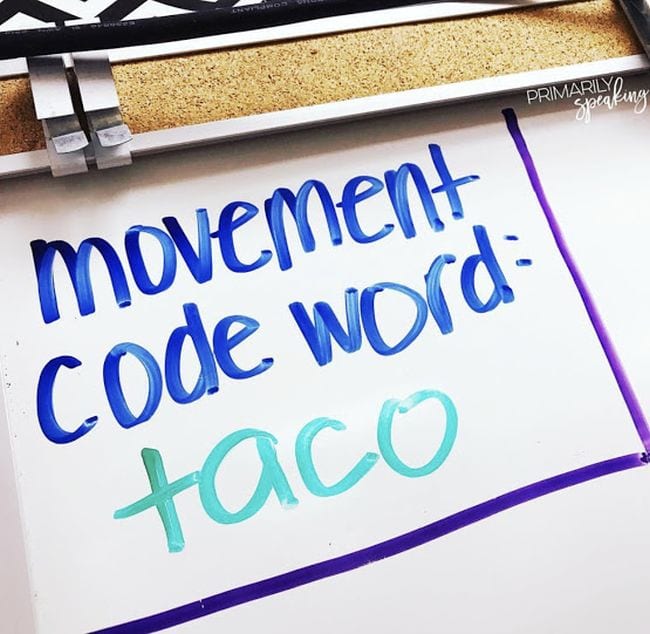
It’s an all-too-familiar scene: You’re giving a set of directions for your next activity, and before you get a full sentence out of your mouth, kids are already heading off to gather supplies or get into groups. They miss those important instructions! Curb this behavior with a movement code word. You’ll choose a word and tell students they need to stay still and listen until they hear you say that word. (It’s a little like Simon Says.) Change up the word occasionally just for fun!
Learn more: Primarily Speaking
10. Flip for good behavior.
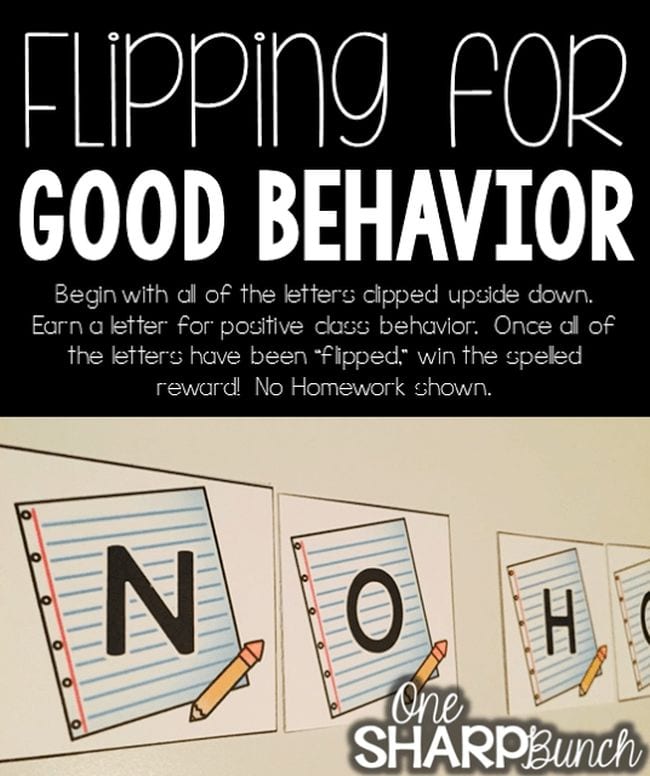
Recognizing good behavior is an important part of first grade classroom management. Help your students understand that they’re all part of a community by rewarding them as a group as well as individually. The unique method here results in a reward—for instance extra recess. You start by posting letter cards with the letters upside-down. Then, as you see good behavior worth recognizing, flip the letters right side up, one at at time. When all the letters are flipped, the class earns its reward!
Learn more: One Sharp Bunch
11. Take brain breaks.
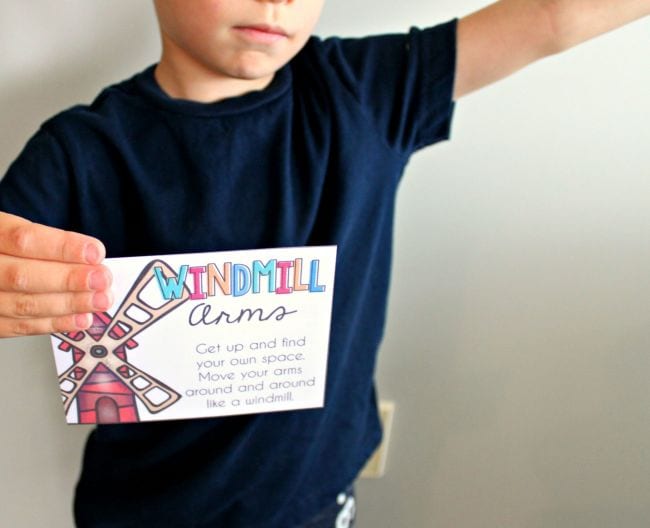
First graders are expected to sit still and learn for longer periods than kindergarten kids, and that can be difficult for some. Give them regular breaks to get up and move; studies show it’s good for learning anyway.
Learn more: Proud to Be Primary
12. Tackle tattling vs. telling.
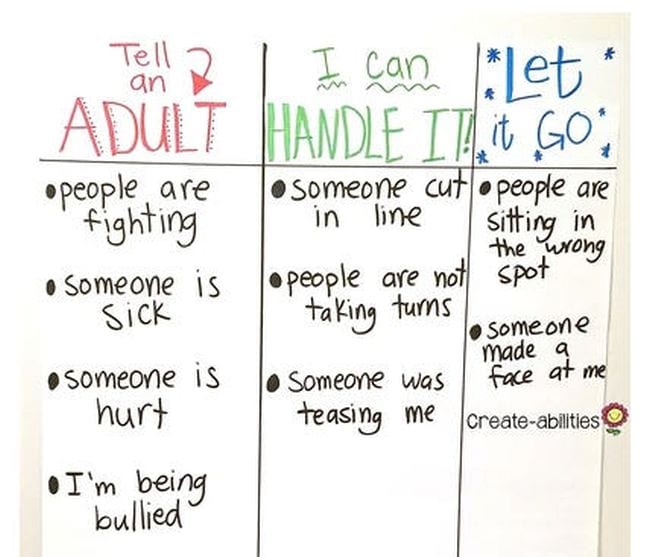
“Mr. Jefferson, Aaron took my scissors!” “Ms. Lacey, Emma stuck her tongue out at me!” For many kids the temptation to tattle is just too much. Help first graders understand when they need to get a grown-up involved (someone is being hurt or is in danger), and when they can handle something themselves or learn to let it go. This kind of thing takes time and practice, but social-emotional learning is definitely a key part of first grade classroom management.
Learn more: Create-Abilities
13. Control noise levels with visual cues.
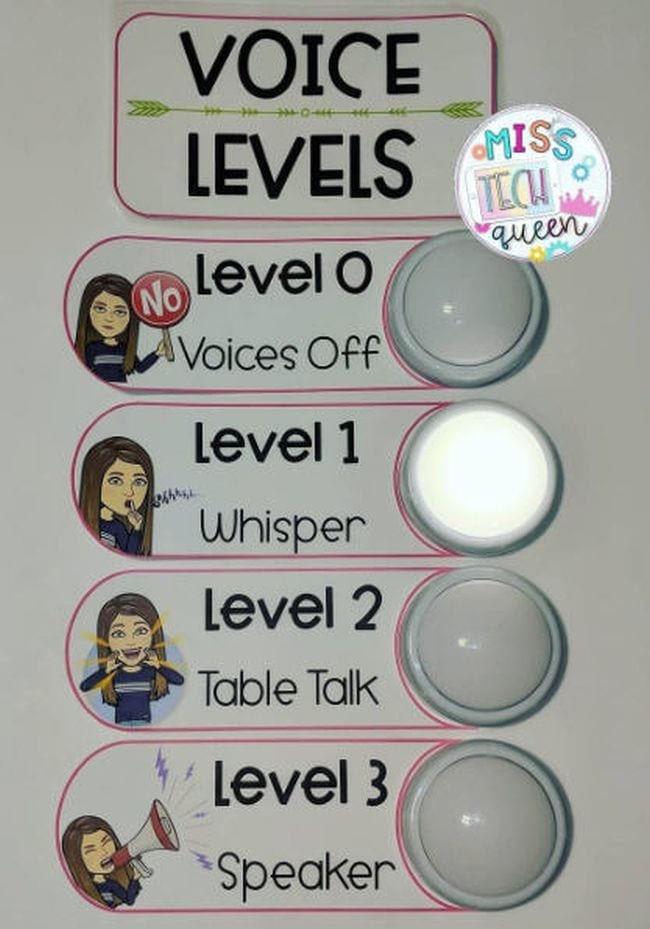
Tap lights have lots of uses in the classroom, and one of the most popular is as a way to signal to kids the appropriate voice level for the current activity. You can also try a noise monitoring app, which provides instant feedback to kids on their noise levels. Never raise your voice again!
14. Set up a Calm Down Corner and toolbox.
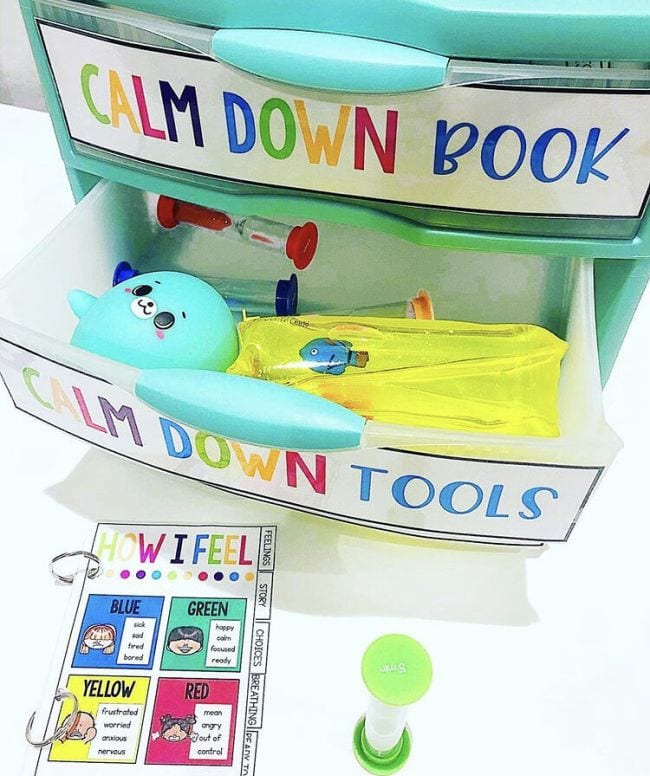
Replace “time outs” with this first grade classroom management option. Calm Down Corners give kids a safe place to go when they need to check their emotions and re-direct their behavior. Stock these corners with tools that students can use to help them calm down and make better choices. Include items like books, fidget toys, stuffed animals, and strategy cards.
Learn more: Creatively Teaching First
15. Consider numbers vs. name tags.
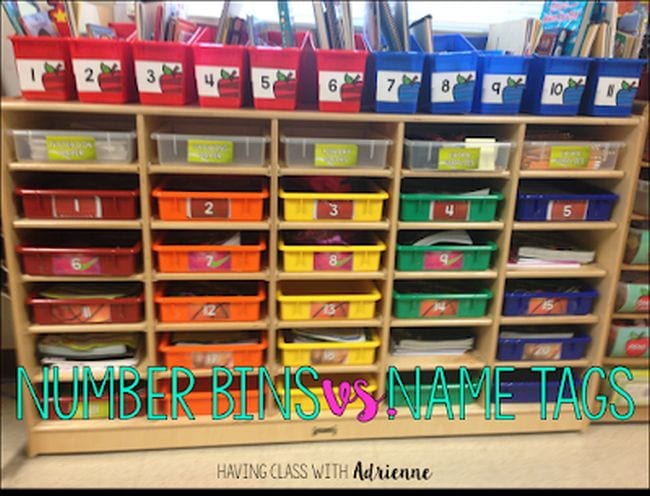
Some folks absolutely hate the idea of labeling things with numbers instead of student names, but there can be some real benefits. Number systems allow you to see at a glance what’s missing. You don’t need to re-label everything year after year. It’s easy to use numbers to divide kids into groups (evens and odds, etc.). So give it some thought; it’s possible this system could make your first grade classroom management a little bit easier. (If numbers just aren’t your thing, find more great classroom organization hacks here.)
Learn more: Adrienne Teaches
Get more first grade classroom management inspiration in this list of 50 Tips, Tricks, and Ideas for Teaching 1st Grade.
Plus, 15 Awesome First Grade Blogs and Teachers to Follow.
